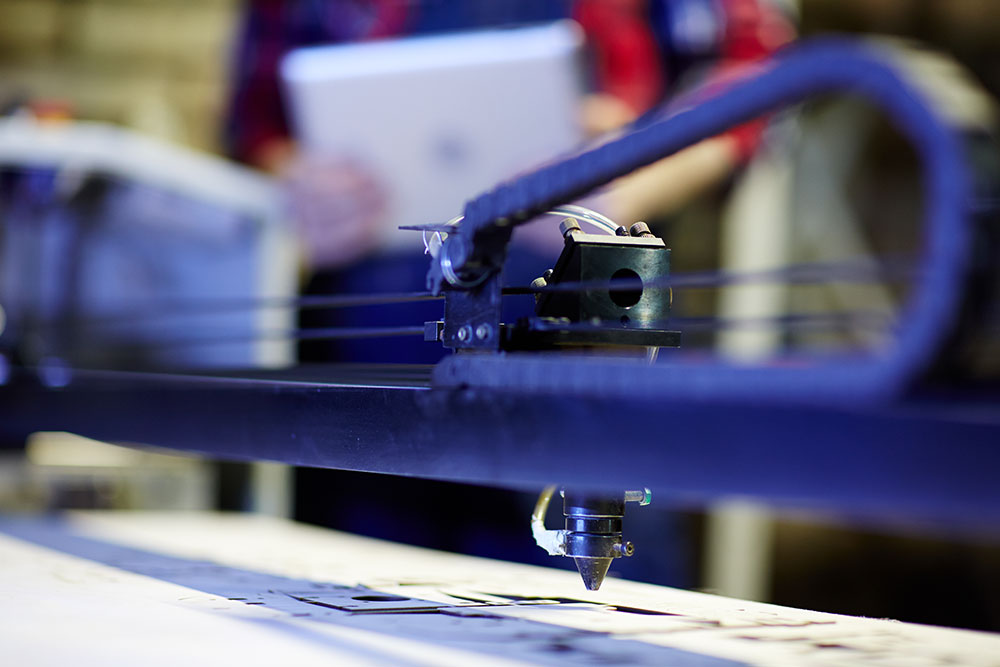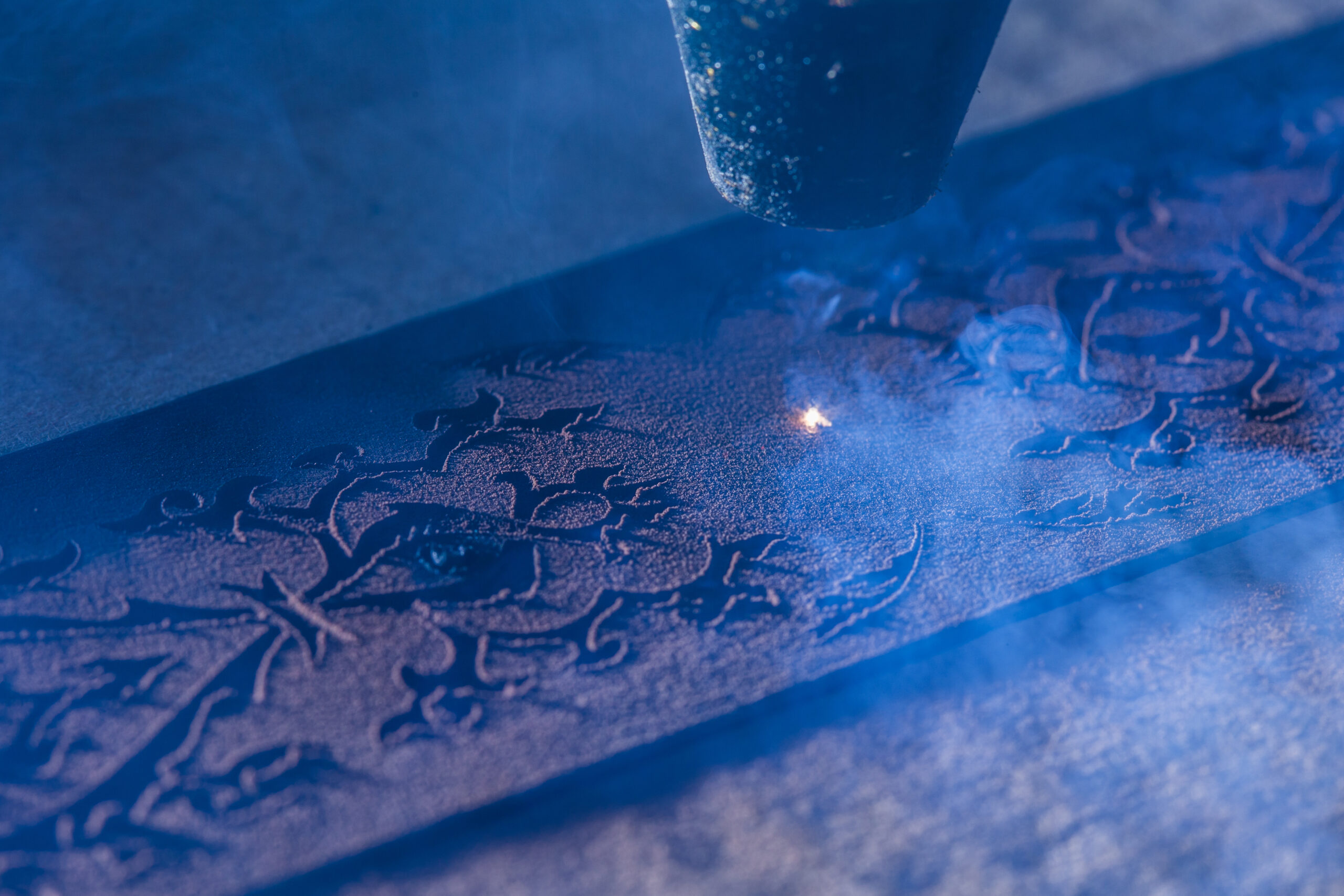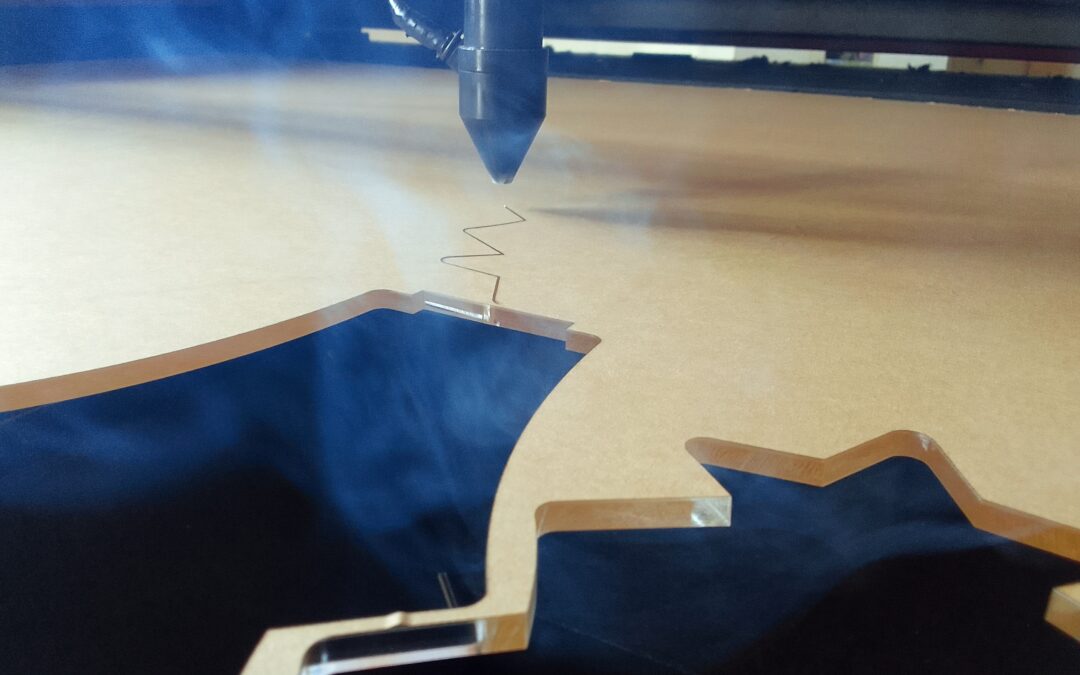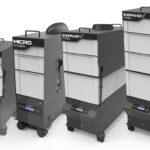Laser cutting is a precise and versatile method for shaping various materials, from acrylic and wood to rubber stamps and even metals. However, it’s essential to be aware of the dangers of the process. When you cut different materials using a laser, various fumes are released, and understanding these emissions is crucial for the operator’s and the environment’s safety. We recommend using a fume extractor specifically designed for laser cutting; read on for more.
In this blog post, we’ll delve into the fumes released when laser cutting popular materials, including acrylic, wood, rubber, metal, and leather. By comprehending the specific fumes associated with each material, you can take appropriate safety precautions and ensure a healthy and productive laser-cutting experience.
Acrylic

Acrylic, also known as PMMA or Plexiglass, is a popular choice for laser cutting due to its clarity and versatility. When laser cutting acrylic, the fumes produced consist primarily of volatile organic compounds (VOCs). For example, cutting transparent acrylic sheets may release fewer fumes than cutting colored or coated acrylic. These fumes are typically low in toxicity but can still irritate the respiratory system and eyes.
Adequate ventilation and a well-maintained exhaust system are essential when working with acrylic to ensure the removal of these fumes and maintain a safe working environment. Properly managing the fumes during acrylic laser cutting helps prevent discomfort and potential health issues for operators while preserving the material’s desirable properties.
Wood

Wood is another common laser-cut material, and the type of wood being used can influence the fumes produced. For instance, cutting hardwoods like oak or maple may result in different fumes than softwoods like pine. Generally, wood releases organic compounds when cut, including aldehydes.
The exact composition of wood fumes can vary depending on the species of wood and its moisture content. It’s crucial to consider proper ventilation and air filtration systems to mitigate potential health risks associated with wood fumes, especially when working with exotic or treated woods like cedar or plywood. Understanding the variations in fume emissions for different wood types helps laser operators take appropriate safety measures for their specific projects.
Rubber Stamps
Rubber stamps, typically made of natural rubber or synthetic materials, are versatile tools for creating repetitive and consistent impressions on various surfaces. While rubber stamps themselves are not associated with harmful emissions or fumes, it’s important to note that if you choose to create custom rubber stamps using a laser cutting process, the fumes produced during laser cutting may pose certain risks. These fumes are primarily composed of sulfur dioxide (SO2) and other organic compounds. Fortunately, these fumes are typically low in toxicity. However, it is still essential to minimize exposure to them.
Metal

Laser cutting metal is a more complex process compared to cutting organic materials. When metal is cut with a laser, the fumes generated consist of metal vapor, metal oxide particles, and potentially hazardous heavy metal compounds, depending on the type of metal being cut. For example, cutting stainless steel can release chromium compounds, while cutting aluminum may produce aluminum oxide particles.
These fumes can pose serious health risks, including metal fume fever, a temporary and self-limiting illness caused by inhaling certain metal fumes, most commonly zinc oxide fumes. It typically occurs in individuals who work with metal welding, cutting, or heating processes where zinc-coated metals are involved, so it’s important to be aware of this risk while laser cutting with metals. Additionally, using appropriate laser parameters, such as power and speed settings, and ensuring the metal is free of coatings or contaminants can help minimize the release of harmful fumes and maintain a safe working environment.
Leather

When laser cutting leather, the fumes produced are reminiscent of the odors associated with burning organic materials. These fumes consist of various organic compounds released as the laser heats and vaporizes the leather’s surface. While leather fumes are generally considered low in toxicity, proper ventilation remains essential to disperse these fumes and maintain a safe working environment. Additionally, removing any synthetic coatings or additives from the leather before cutting can further reduce the emission of potentially harmful compounds, ensuring a cleaner and healthier workspace for operators.
Safety Measures
After discussing the hazards regarding laser cutting, it’s important to acknowledge ways to prevent and minimize risks. Researching and understanding the potential emissions associated with any material you intend to laser cut is crucial. Material Safety Data Sheets (MSDS) and manufacturer recommendations can provide valuable information on handling and cutting specific materials safely. Staying safe while cutting with lasers is crucial to prevent accidents and protect your health.
First and foremost, using a fume extractor machine is the number one method to ensure proper ventilation and effectively remove harmful fumes during laser cutting. Complement this with essential personal protective equipment (PPE) such as laser safety glasses, gloves, and respirators. Stay knowledgeable about laser cutter operation, materials, and their specific risks. Maintain an organized workspace, adhere to emergency and safety procedures, and practice good personal hygiene. Maintaining your laser cutter and prioritizing a fume extractor will ensure a safe and secure environment for all operators.
In summary, laser cutting is a versatile and powerful tool, renowned for its ability to create intricate designs and shapes in various materials with unparalleled precision. However, it’s vital to be acutely aware of the fumes released during the laser cutting process, as some of these emissions can pose risks to both health and the environment. Understanding the composition and potential risks associated with these fumes is the first crucial step in ensuring a safe, responsible, and sustainable laser-cutting operation. Always prioritize and implement proper ventilation systems, equip yourself and your team with appropriate personal protective equipment (PPE), and diligently adhere to safety guidelines when working with laser-cut materials. By doing so, you not only safeguard your well-being but also protect those around you and minimize the environmental impact of your laser cutting activities.








Recent Comments